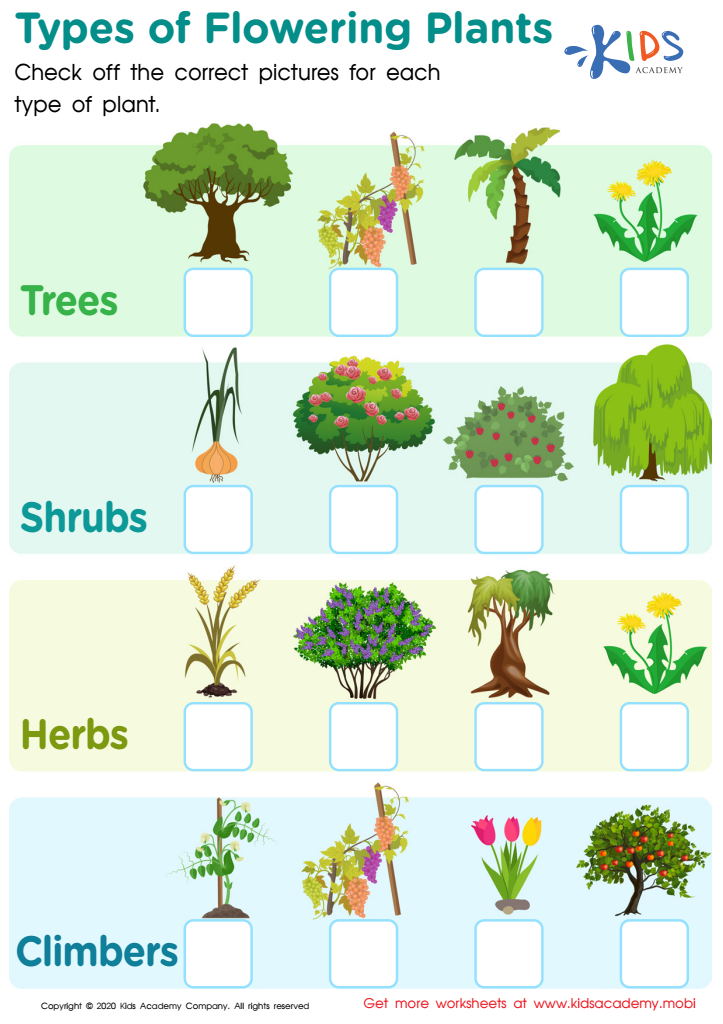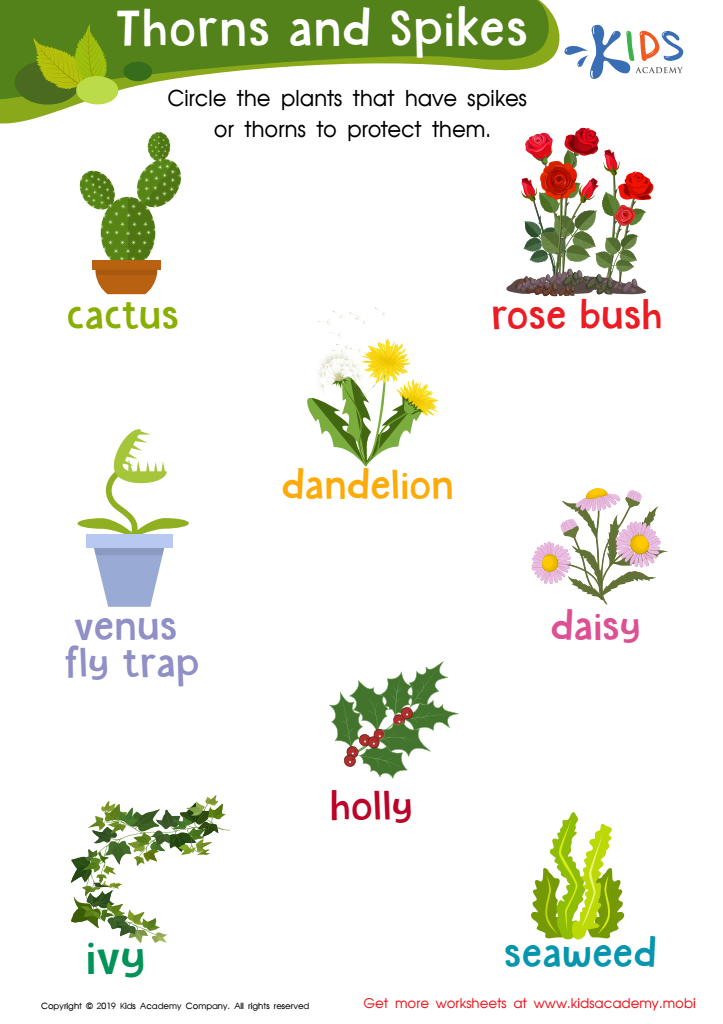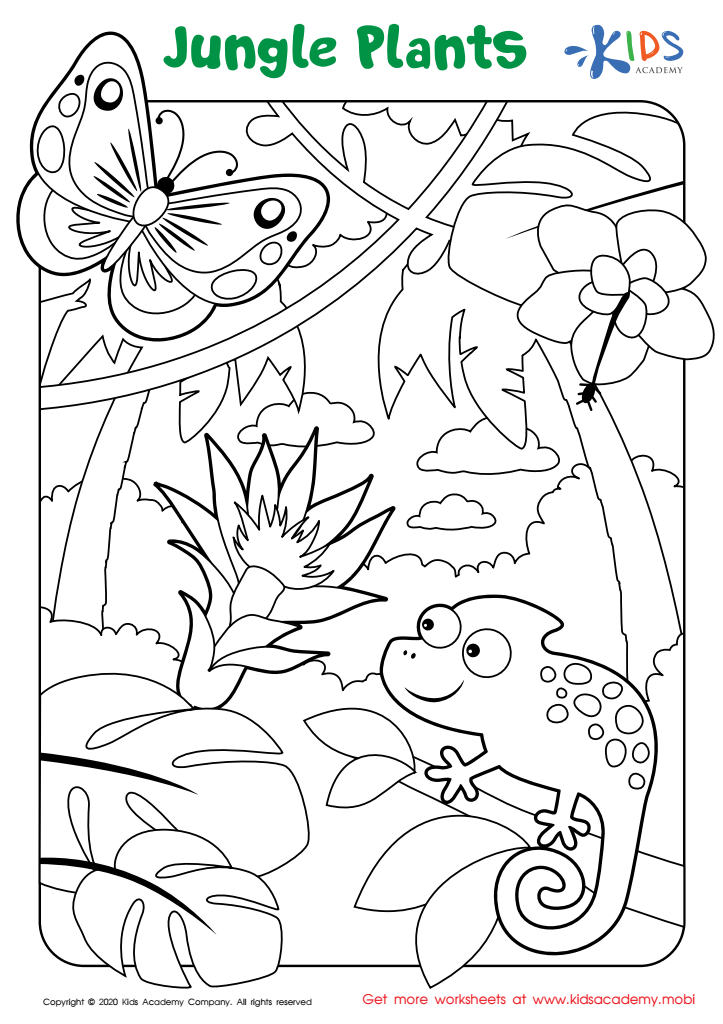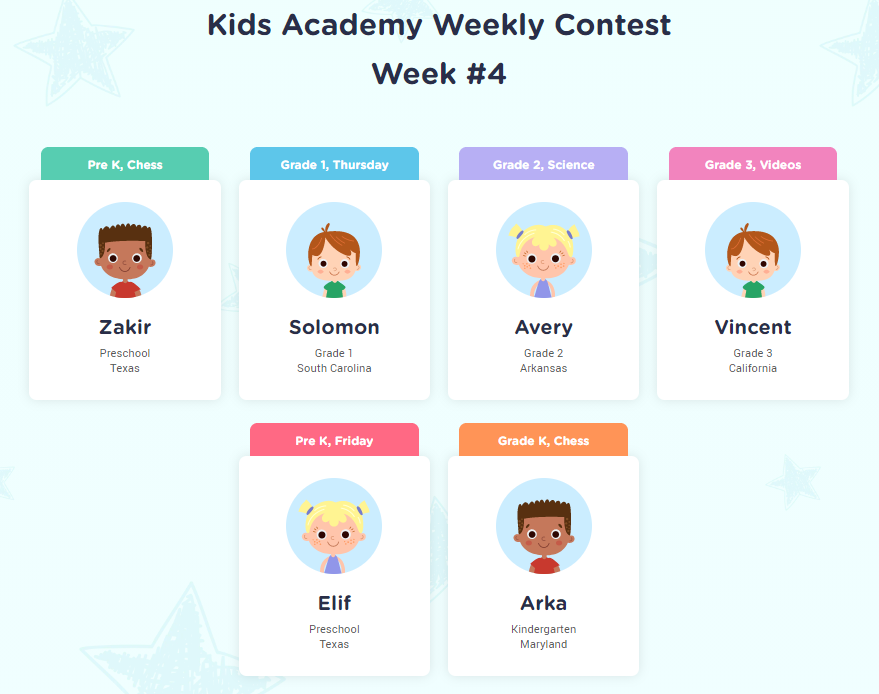Plant identification Worksheets for Ages 3-9
5 filtered results
-
From - To
Discover our engaging Plant Identification Worksheets designed specifically for children aged 3-9! These fun and interactive printables help young learners explore the beauty and diversity of plants while fostering a love for nature. Each worksheet features colorful illustrations and age-appropriate activities that encourage kids to identify various plants, learn their names, and understand their characteristics. Ideal for parents, teachers, and homeschoolers, these worksheets promote essential skills such as observation, vocabulary development, and critical thinking. Enhance your child's learning experience and spark their curiosity about the natural world with our comprehensive plant identification resources! Download them today and watch your young explorers bloom!


Types of Flowering Plants Worksheet


Plant Fun Worksheet


Thorns and Spikes Worksheet


What Do Plants Need to Grow Worksheet


Jungle Plants Worksheet
Plant identification is crucial for children aged 3-9 for several reasons. Firstly, it fosters a connection with nature, encouraging curiosity about the environment. Understanding different plants cultivates a sense of wonder and can lead to a lifelong appreciation for the natural world. This early exploration also supports cognitive development as children learn to classify and categorize various plant species, enhancing critical thinking and observation skills.
Additionally, plant identification promotes environmental awareness. By recognizing and understanding local flora, children gain insights into ecosystems, biodiversity, and the importance of conservation. This foundational knowledge can empower them to care for their surroundings and become environmentally responsible citizens.
From a health perspective, recognizing edible plants and understanding their benefits can also inspire healthier eating habits. This awareness can lay the groundwork for better dietary choices as they grow.
Lastly, engaging with plants offers numerous sensory experiences—children can touch, smell, and even taste some safe plants, stimulating their sensory development while making learning joyful and tangible. Overall, integrating plant identification into educational settings encourages exploration, responsibility, and a profound appreciation for the natural world, making it essential for teachers and parents alike.

 Assign to My Students
Assign to My Students
















